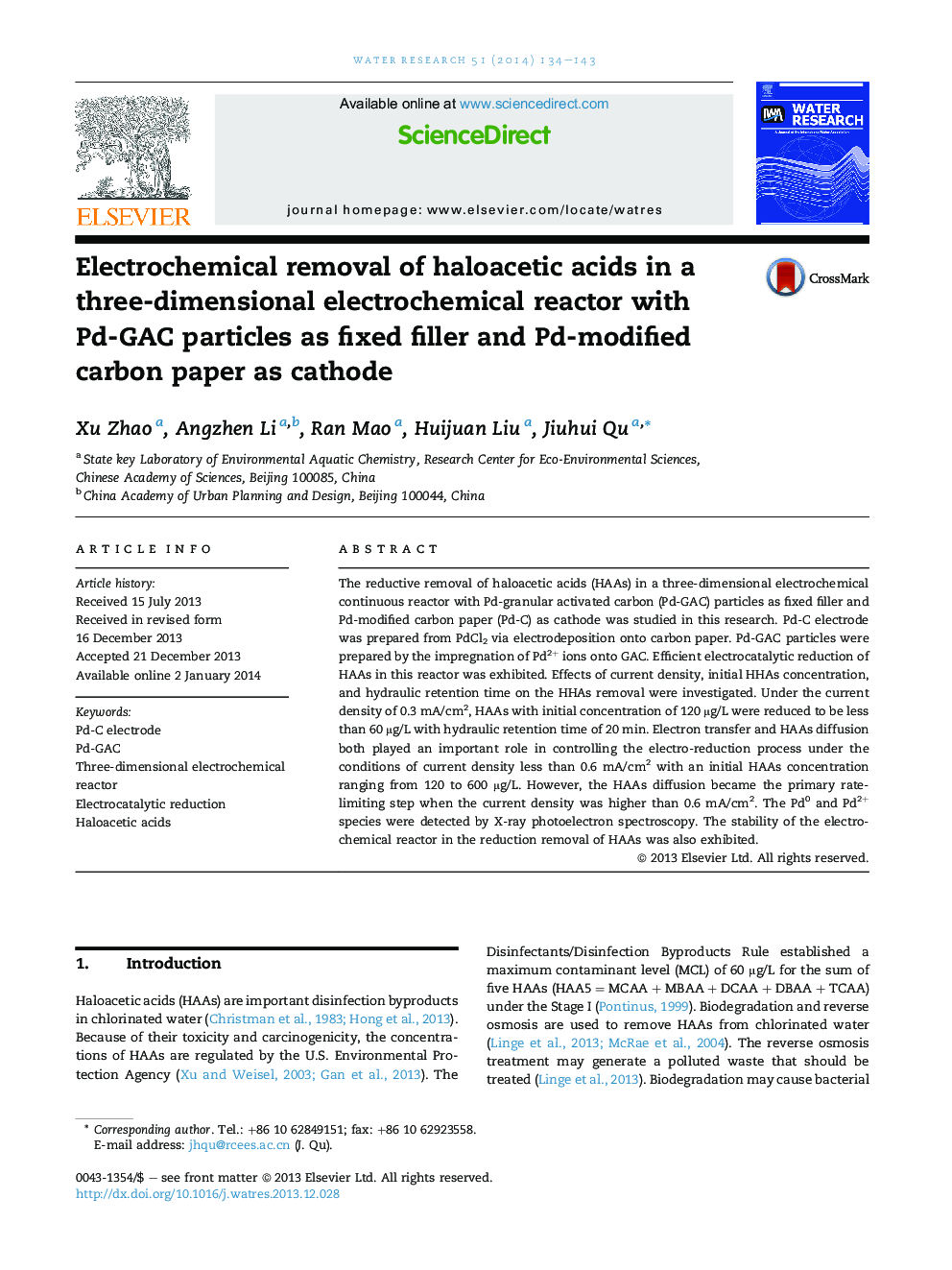| Article ID | Journal | Published Year | Pages | File Type |
|---|---|---|---|---|
| 4481635 | Water Research | 2014 | 10 Pages |
•Electrochemical removal of HAAs was achieved in a three-dimensional reactor.•Pd-modified carbon fiber prepared by electrodeposition was used as cathode.•Pd modified active carbon particles were used as fixed filler of the cathode cell.
The reductive removal of haloacetic acids (HAAs) in a three-dimensional electrochemical continuous reactor with Pd-granular activated carbon (Pd-GAC) particles as fixed filler and Pd-modified carbon paper (Pd-C) as cathode was studied in this research. Pd-C electrode was prepared from PdCl2 via electrodeposition onto carbon paper. Pd-GAC particles were prepared by the impregnation of Pd2+ ions onto GAC. Efficient electrocatalytic reduction of HAAs in this reactor was exhibited. Effects of current density, initial HHAs concentration, and hydraulic retention time on the HHAs removal were investigated. Under the current density of 0.3 mA/cm2, HAAs with initial concentration of 120 μg/L were reduced to be less than 60 μg/L with hydraulic retention time of 20 min. Electron transfer and HAAs diffusion both played an important role in controlling the electro-reduction process under the conditions of current density less than 0.6 mA/cm2 with an initial HAAs concentration ranging from 120 to 600 μg/L. However, the HAAs diffusion became the primary rate-limiting step when the current density was higher than 0.6 mA/cm2. The Pd0 and Pd2+ species were detected by X-ray photoelectron spectroscopy. The stability of the electrochemical reactor in the reduction removal of HAAs was also exhibited.
Graphical abstractFigure optionsDownload full-size imageDownload high-quality image (292 K)Download as PowerPoint slide
